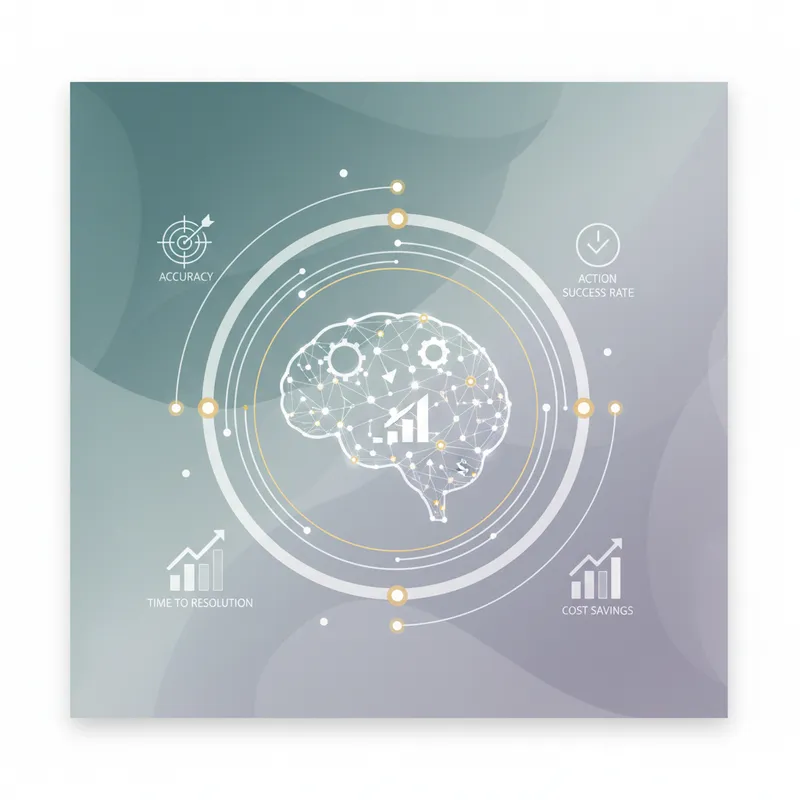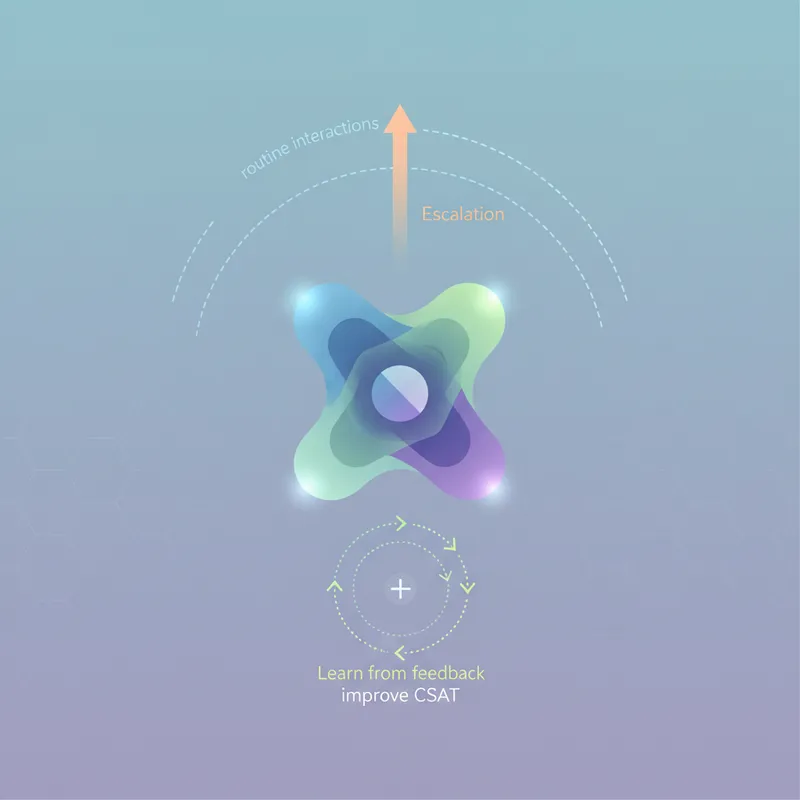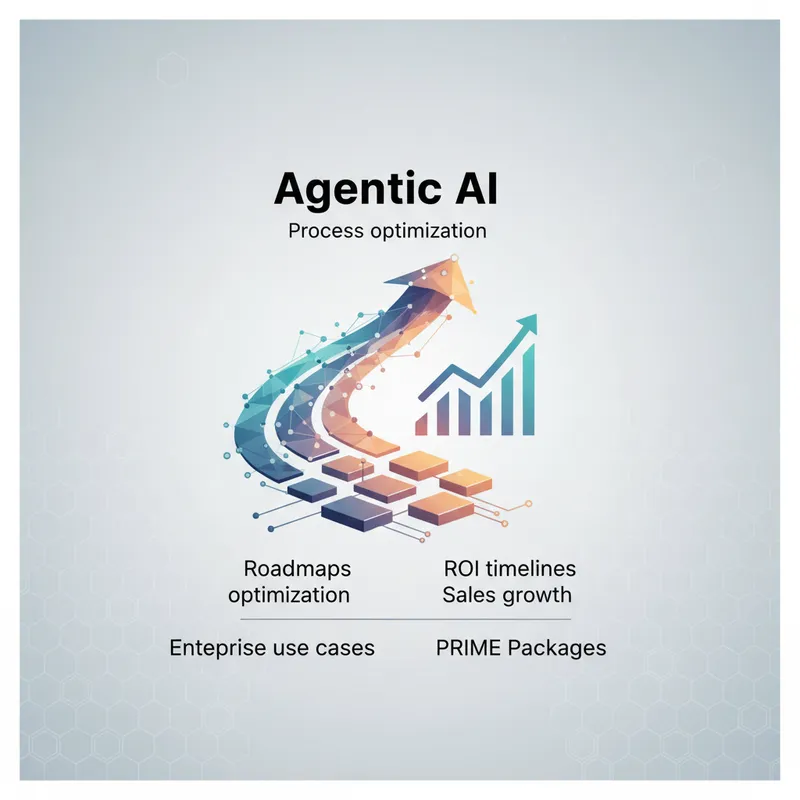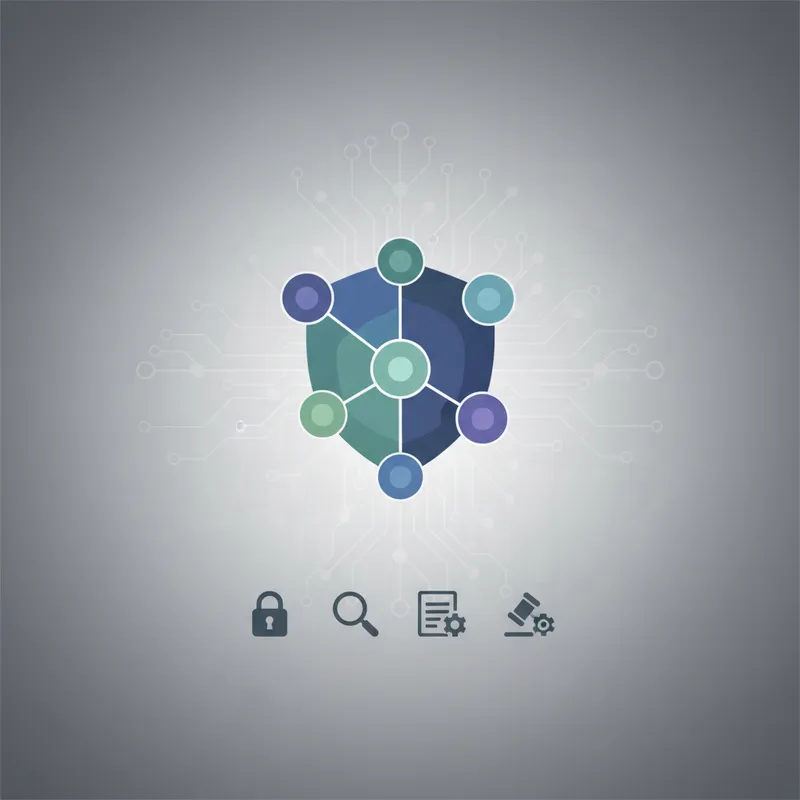
Agentic AI is changing how teams automate complex workflows, delegate multi step tasks, and augment human decision making. To capture real value and reduce risk, organizations need clear ways to measure how well these agentic systems perform. This guide focuses on agentic AI metrics, offering an educational framework that lists the most meaningful KPIs and shows practical ways to instrument them. Whether you are launching a pilot agent, scaling to production, or monitoring fleets of agents, knowing which metrics to track helps you prioritize improvements and tie AI performance to business outcomes. Learn more in our post on Security and Compliance for Agentic AI Automations.
In the sections that follow, you will find definitions for core KPIs such as accuracy, action success rate, time to resolution, and cost savings. You will also get step by step advice on logging, labeling, establishing baselines, setting service level objectives, and building dashboards. Throughout the guide the phrase agentic AI metrics appears intentionally to reinforce measurement patterns that link technical outputs to operational impact. Use this as a practical checklist to design instrumentation, build repeatable evaluations, and create governance around agent-driven automation.
Core Agentic AI Metrics to Track
Choosing the right set of agentic AI metrics starts with a clear mapping from agent behaviors to desired outcomes. At a minimum, teams should measure correctness, reliability, speed, and economic impact. The following KPIs are foundational and apply across many agentic use cases including workflow automation, virtual assistants, research agents, and orchestrators. Learn more in our post on Custom Integrations: Connect Agentic AI to Legacy Systems Without Disruption.
Accuracy
Accuracy measures how often an agent produces the correct or acceptable result when evaluated against a labeled reference. For language oriented agentic tasks, accuracy can take forms such as exact match, intent classification F1, or task specific correctness checks. For multi step agentic workflows, compute accuracy per step and an end to end accuracy across the full decision path. Tracking both levels helps you find whether failures are isolated to a single action or are systemic.
Practical instrumentation for accuracy requires high quality ground truth. Create labeled datasets representing typical and edge case inputs. Automate periodic sampling and human review to validate labels. Report accuracy with confidence intervals and segment by input type, channel, and agent configuration. Doing so turns raw percentages into actionable insight and makes agentic AI metrics more interpretable for product teams.
Action Success Rate
Action success rate is the percentage of attempted actions that complete as intended. In agentic systems an action might be a call to an external API, a database write, a file upload, or a human handoff. Measure success at the atomic action level and at the composite action level for sequences that must succeed together. Composite success rate often declines faster than atomic rates because of error propagation.
Instrument each action with standardized outcome codes for success, retry, transient failure, and permanent failure. Capture metadata such as the caller context, input parameters, and external system responses. These structured logs let you calculate action success rate and perform root cause analysis. When used together, accuracy and action success rate provide a clear picture of whether failures are due to incorrect reasoning or external dependencies, making agentic AI metrics practical for engineering teams.
Time to Resolution
Time to resolution measures how long it takes an agent to satisfy a request or complete a workflow. For user facing agents this often means response latency plus any follow up interactions until the issue is closed. For background agents, it may mean the elapsed time from task creation to completion. Time to resolution is critical for user experience and for operational cost planning.
Break time to resolution into measurable segments such as planning time, action execution time, external wait time, and verification time. Use distributed tracing to correlate steps. Track percentiles such as p50, p90, and p99 to understand tail behavior. By combining time to resolution with action success rate and accuracy, you can determine whether faster responses are reducing quality or whether improvements in speed translate into better business outcomes.
Cost Savings
Cost savings tie agentic AI metrics directly to business value. Calculate cost savings by comparing the total cost of handling a task or process before and after agent deployment. Include labor, processing, and error remediation costs. For continuous operations, measure cost per completed task and cost per successful action over time.
To attribute savings credibly, establish a baseline period and control cohorts where possible. Use A/B experiments or phased rollouts to isolate agent effect. Present cost savings alongside quality KPIs such as accuracy, because lower cost with degraded quality is not a win. Integrating cost metrics into the same dashboards as technical agentic AI metrics ensures that stakeholders can balance efficiency and effectiveness.
How to Instrument Agentic AI Metrics
Good instrumentation is the difference between guesswork and reliable insights. The work of collecting agentic AI metrics starts with designing events, choosing observability tools, and defining labeling processes. This section lays out a practical instrumentation plan you can adapt to your environment. Learn more in our post on Cost Modeling: How Agentic AI Lowers Total Cost of Ownership vs. Traditional Automation.
Begin with a taxonomy of events that covers agent lifecycle stages: input received, planning step started, action executed, action result received, verification step, and workflow closed. For each event define a schema that includes timestamps, unique identifiers, agent configuration, input features, output items, and outcome codes. Standardize fields so that logs are queryable across multiple agents and versions.
Centralized logging and tracing are essential. Use structured logs that can be ingested by analytics and monitoring systems. Ensure correlation IDs propagate across services and external APIs. For distributed agentic workflows, trace segments end to end to calculate time to resolution and to attribute failures. Instrument retries and rate limiting so action success rate calculations can distinguish transient issues from real faults.
Labeling and Ground Truth
High quality labels are required for accuracy measurement. Build an annotation pipeline that supports human review, consensus labeling, and periodic relabeling for drift. Capture not just labels but annotator confidence and notes on ambiguous cases. Store labeled samples with the exact inputs that produced outputs so you can recreate evaluation environments.
Automate sampling to avoid bias. For example, oversample low frequency but high impact cases such as regulatory edge cases or transaction failures. Maintain a balanced evaluation set that mirrors production distributions and retains historical snapshots to detect performance regression. A labeling workflow that connects to the same logging streams used for operational monitoring reduces friction and data mismatch.
Dashboards and Alerts
Create dashboards that combine agentic AI metrics with contextual logs and business metrics. Visualize trends for accuracy, action success rate, time to resolution, and cost per task. Include filters for agent version, data source, time window, and user segment. Use SLOs to translate tolerances into alerting rules. For example, set a page trigger if action success rate drops below a threshold or if p99 time to resolution exceeds an agreed bound.
Design alerts to reduce noise. Add automated triage that classifies alerts into severity tiers and includes prepopulated queries to speed diagnosis. Include playbooks that map common alert patterns to corrective actions. Coupling alerts to dashboards ensures that on call teams have the necessary context to remediate without lengthy manual investigation.
Quality checks and synthetic monitoring are useful additions. Run scripted end to end scenarios that validate critical paths at regular intervals. Synthetic checks catch regressions that passive monitoring might miss, particularly for rarely used but mission critical workflows. Together these strategies provide comprehensive instrumentation for agentic AI metrics.

Advanced KPIs and Operational Metrics
Once core metrics are stable, expand to advanced agentic AI metrics that give deeper operational insight. These KPIs help you manage scale, safety, and end user experience. The list below covers throughput, safety indicators, human override rate, user satisfaction, drift metrics, and resource efficiency.
Throughput and Concurrency
Throughput measures how many tasks or actions agents complete in a given time window. Concurrency measures how many tasks the system can handle simultaneously. Track throughput by agent type and by entry point. High throughput with poor accuracy indicates that scale is amplifying mistakes. Conversely, low throughput with high accuracy suggests a bottleneck or overly conservative logic.
Instrument thread pools, worker counts, and queue lengths to correlate resource settings with throughput. Use rate limiting and backpressure mechanisms to protect downstream systems and maintain predictable action success rate under load. Monitoring these agentic AI metrics allows you to size infrastructure and tune policies effectively.
Human Override and Escalation Rate
Human override rate is the fraction of agent decisions or actions that are canceled, corrected, or escalated by a human. Escalation rate includes cases where agents intentionally hand off to human operators. Both metrics are vital for safety sensitive domains and for workflows where human judgement is required for final approval.
Log override events with context about why the override occurred, who intervened, and what the final resolution was. Analyze patterns to identify where agents need better training data or clearer guardrails. Reducing unnecessary overrides while maintaining appropriate escalation thresholds is a key optimization when scaling agentic systems.
User Satisfaction and Task Outcomes
User satisfaction connects agentic AI metrics to qualitative experience. Collect satisfaction scores through surveys, feedback buttons, and follow up interviews. Combine satisfaction signals with objective task outcome metrics to see how perceptions align with measurable performance. For instance, an agent may have high action success rate but low satisfaction if explanations and transparency are poor.
Segment satisfaction by user persona, channel, and task complexity. This helps prioritize improvements that yield the highest perceived value. Use satisfaction scores as part of a composite KPI that includes accuracy and time to resolution to give product teams a balanced view of agentic performance.
Model Drift and Data Drift Detection
Drift occurs when the statistical properties of inputs or outputs change over time. Implement drift detection for feature distributions, label distributions, and prediction confidence. Track drift metrics as part of the agentic AI metrics suite and create automated alerts that trigger retraining or human review.
Store production inputs for a sliding window and compare them to training distributions. Monitor prediction confidence and entropy to detect when agents are unsure. When drift is identified, use targeted validation and controlled rollouts to mitigate risk. Proactive drift monitoring prevents slow degradation of accuracy and action success rate.
Safety and Compliance Indicators
Safety KPIs monitor for harmful outputs, privacy violations, and policy breaches. Define safety rules and detection models that flag risky outputs in real time. Track the number of safety interventions, false positives, and false negatives to calibrate detectors.
For regulated environments, instrument audit trails that record decision rationale and data provenance. Include retention policies and secure logging to meet compliance requirements. Safety KPIs are core to responsible agentic AI metrics and should be part of executive reporting.

Testing, Benchmarking, and Validation Strategies
Measuring agentic AI metrics reliably requires rigorous testing and benchmarking. Use a mix of offline evaluation, synthetic stress tests, canary releases, and controlled experiments. Each method yields different insights and together they form a robust validation strategy.
Offline Evaluation
Offline evaluation uses labeled datasets to measure accuracy, precision, recall, and other classification metrics. For agentic workflows, simulate full sequences using recorded input traces to compute end to end accuracy and composite action success rate. Offline tests are repeatable and low cost, making them ideal for model selection and initial validation.
Maintain a test suite that includes typical, rare, and adversarial cases. Run the suite against new agent versions and record regressions. Integrate offline evaluation into continuous integration pipelines so agentic AI metrics are checked automatically before deployment.
Synthetic Stress Tests
Create synthetic scenarios that push agents to their limits. Introduce high concurrency, delayed external responses, malformed inputs, and adversarial prompts. Synthetic tests reveal failure modes that normal production traffic might not surface. Measure how agentic AI metrics such as action success rate and time to resolution behave under these conditions.
Automate stress tests to run during off peak hours or in staging environments. Use the results to establish capacity and resilience targets and to prioritize engineering investments that improve robustness.
Canary and A B Testing
Canary releases and A B experiments are essential for measuring real world impact. Route a small percentage of traffic to the new agent or model and compare agentic AI metrics across cohorts. Use statistical tests to determine whether differences are significant. For business metrics like cost savings, run longer experiments to account for seasonality and user learning effects.
Design experiments to minimize risk. Include rollback triggers based on accuracy, action success rate, or safety indicators. Document experiment outcomes and use them to inform rollout decisions and further tuning.
Human in the Loop Evaluation
For complex tasks, incorporate human in the loop evaluation to assess both correctness and interpretability. Humans can rate the quality of explanations, assess partial credit for multi step tasks, and flag ambiguous decisions. Use these annotations to refine reward signals, adjust guardrails, and improve the agentic AI metrics that matter to stakeholders.
Combine human judgements with automated metrics to form composite scores that better represent real world performance. Track inter annotator agreement and continuously improve annotation guidelines to maintain measurement quality.
Implementation Roadmap and Best Practices
Implementing a measurement program for agentic AI metrics is a cross functional effort. It requires product managers, data scientists, engineers, annotators, and compliance owners to align on objectives and practices. Below is a practical roadmap and a set of best practices to help teams get started and scale.
Roadmap
Define goals and success criteria. Map agent capabilities to business objectives and choose a focused set of core agentic AI metrics to track initially.
Establish baseline data. Collect historical logs or run short pilots to establish baseline levels for accuracy, action success rate, time to resolution, and cost per task.
Design instrumentation. Create event schemas, correlation IDs, and logging standards. Deploy centralized logging and tracing.
Build labeling pipeline. Set up annotation tools, sampling strategies, and quality checks.
Create dashboards and SLOs. Visualize metrics and set alert thresholds tied to business impact.
Run controlled experiments. Use canaries and A B tests to validate improvements and detect regressions.
Scale and iterate. Add advanced KPIs such as drift detection and safety indicators. Automate retraining triggers based on monitored metrics.
Best Practices
Start small. Focus on a minimal set of agentic AI metrics that map to clear outcomes and expand over time.
Instrument consistently. Standardize logs so metrics are comparable across agents and versions.
Measure end to end. Track both atomic action metrics and composite workflow metrics to identify propagation of errors.
Balance quality and cost. Report cost savings together with accuracy and satisfaction to avoid optimizations that hurt user experience.
Automate drift detection. Proactively detect distribution shifts before they impact production accuracy or action success rate.
Include humans. Use human review for labeling, safety checks, and to evaluate nuanced outcomes that automated tests miss.
Govern and document. Maintain clear documentation of definitions, SLOs, and playbooks for incident response related to agentic AI metrics.

Conclusion
Measuring agentic AI performance requires a thoughtful set of agentic AI metrics that go beyond raw model scores. Core KPIs such as accuracy, action success rate, time to resolution, and cost savings are the foundation because they connect technical behavior to business impact. Instrumentation that includes standardized logging, correlation IDs, human labeling, and synthetic checks creates the data needed to compute these metrics reliably. Advanced operational metrics such as throughput, human override rate, user satisfaction, drift detection, and safety indicators provide the additional visibility required to operate at scale and reduce risk.
Practical implementation is iterative. Start with a small set of prioritized agentic AI metrics, establish baselines, and then expand instrumentation and dashboards as you learn. Use offline evaluation and synthetic tests for repeatable checks, and complement those methods with canary releases and A B experiments to measure real world effects. Human in the loop evaluation should be used where nuance matters and where automated metrics do not capture user perceptions or policy concerns. Treat measurement as an ongoing engineering effort that requires collaboration across product, data, and compliance teams.
Governance and clear documentation are essential to sustain measurement quality. Define precise metric definitions, SLOs, and alert thresholds. Create playbooks for common failure patterns and ensure that stakeholders understand which agentic AI metrics are leading indicators and which are lagging. Integrate cost analysis with quality metrics to ensure that efficiency gains do not compromise user trust. Finally, make observability and testing a routine part of development cycles so that improvements to agent design are measured and validated before being fully rolled out.
By building a robust measurement program around well chosen agentic AI metrics, organizations can accelerate safe scaling and continually improve agent performance. Measurement becomes the mechanism for learning and accountability, enabling teams to make data driven decisions and to demonstrate the value of agentic automation across the enterprise. Emphasize repeatable practices, invest in labeling and drift detection, and align metrics to business outcomes to maximize the returns from agentic AI investments.



